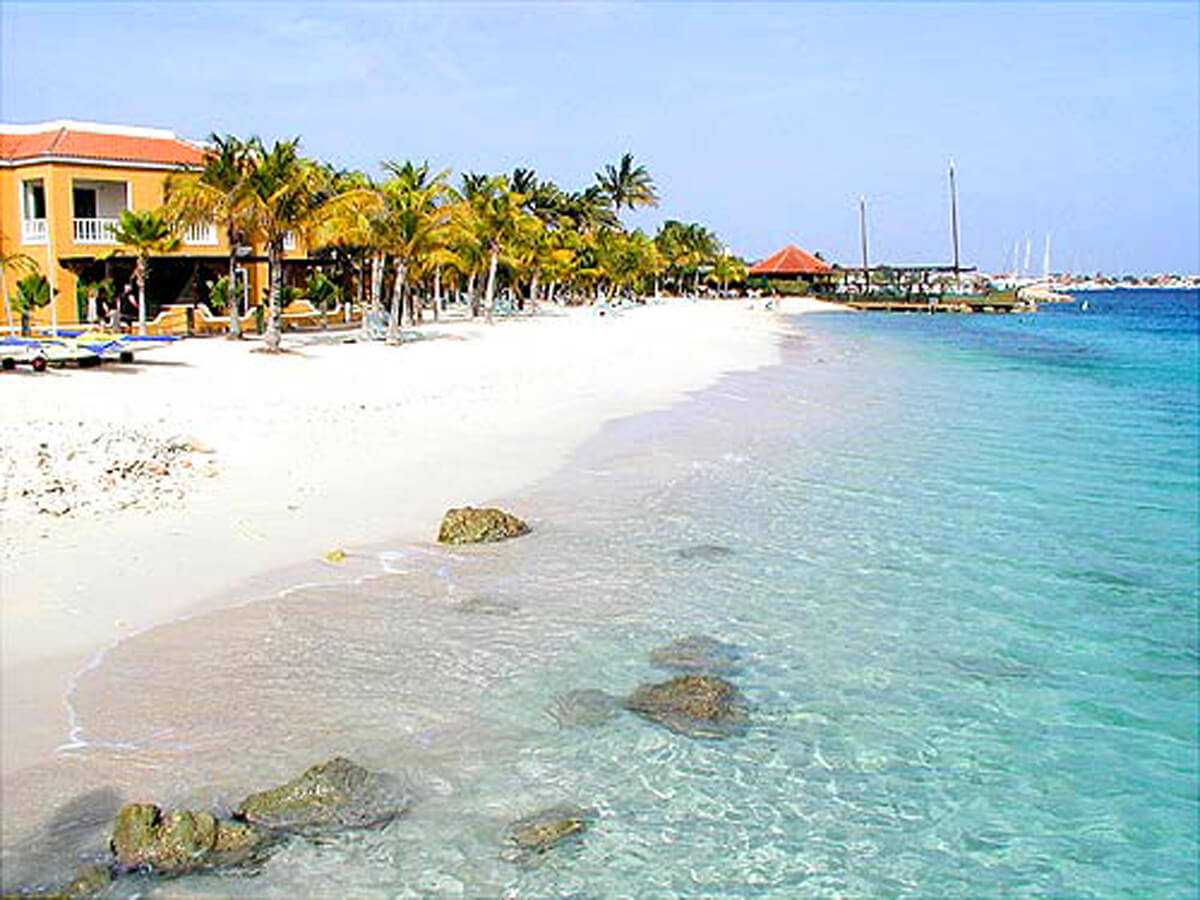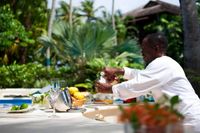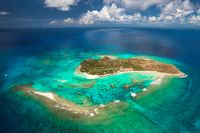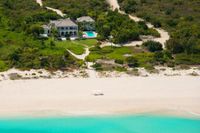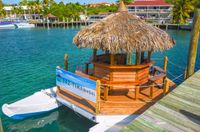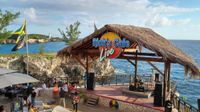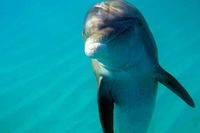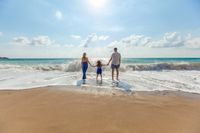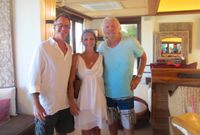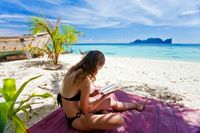“Sharks, such amazing creatures,” my husband commented to no one in particular as he stared hypnotically at the television. “Let’s take a dive trip again, honey!” (He always follows suggestions with “honey” when attempting to persuade me to do something.)
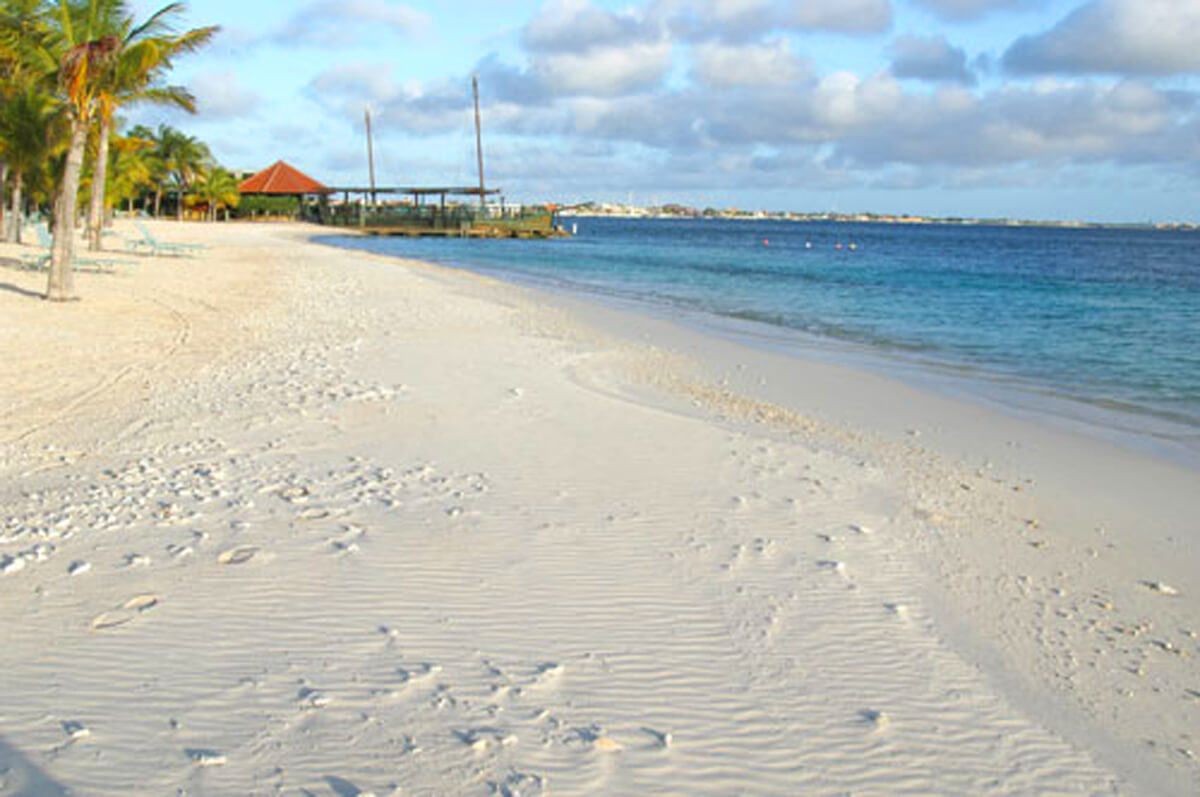
“Nothing like a documentary on sharks to get one inspired to pull out the wet suit,” I responded sarcastically. This reluctance spawned from not diving since the birth of our son, six years ago. Floatation devices now consisted of rubber duckies and water wings.
By the next day, my determined hubby had targeted the island of Bonaire for our vacation destination. This Dutch island, just north of South America, has long been known as “diver’s paradise” and the sidekick to its more developed siblings, Aruba and Curacao. Excitedly he showed me Bonaire’s map and pointed out the numerous dive flags lining the coast. The abundance of red and white striped markers made the coastline look more like a candy cane than a beachfront. There’s only one thing wrong with taking a dive vacation; it’s called a “dive resort.” Usually minimal in nature, hosting guests merely concerned with the boat parked out front, dive resorts do not constitute a vacation experience in my mind. Knowing this could serve as the Achilles’ heel to vacation operation “Convince Wife,” my husband came fully prepared with photos of Bonaire’s premier luxury resort, Harbour Village Beach Club.
Dutch-Caribbean-style stucco buildings in mustard yellow, neatly trimmed in white and topped with red-tiled roofs piqued my interest. Spa treatments, a personal concierge and villas nicely appointed with teak furnishings and a terrace butted up to the beach served as the impetus for me to search for my regulator and mask.
The resort looked exactly like the pictures and the European Plantation style decor featured the added amenities of a claw-foot tub and a fully-stocked mini bar. In typical dive resort fashion, Harbour Village also prides itself on the boats parked out front, the mega-yachts lining the 64-slip marina.
The biggest boat lining the harbor is the restaurant La Balandra Beach Bar and Restaurant, a pier fashioned after a boat, which serves breakfast and lunch on property. Perfectly paired with this “boat” is Harbour Village’s other on-site restaurant located in a lighthouse, appropriately named Lighthouse Bar & Grill. Connected with local fishermen, the chef/owner incorporates delightfully fresh catches into his Caribbean-style cuisine, although he claims it’s the Lighthouse’s world-class margaritas that really guide sailors in during the night.
While the margaritas tasted great, I’m willing to bet the amazing diving continues to be the biggest draw for visitors to Bonaire. The Reef Protection Program requires that all divers be tested on their dive skills prior to diving as a precautionary measure to protect the reefs. A $10 conservation fee is also enforced by the government. I’m not exactly sure I could pass the parallel parking section of a driver’s test and I drive daily. Needless to say, I was a bit nervous about this underwater pop quiz. I figured my husband (who’s logged over 200 dives) would be put out by having to perform such menial tasks. Surprisingly he was impressed.
“I’ve seen so many damaged reefs from unskilled divers. I’ll gladly clear my mask and take my regulator out of my mouth for them,” he said nodding his head in support.
Within the first ten feet, the abundance of purple vase sponges, orange elephant ear sponges, and the pristine reef teeming with a colorful array of fish and sea turtles were sure indicators that these preservation efforts pay off. Having brushed up a bit on my dive skills helped me to feel relaxed enough to explore the new wreck right off the banks of Harbour Village. Even by boat, dive sites were less than 20 minutes away. A stone’s throw from the resort, the small, uninhabited island of Klein Bonaire revealed some of the most remarkable seascapes. So much to see within 20 to 30 feet of water allowed for us to dive for extended periods of time, since our air lasted longer. I purposely corrected my form as I glided by the live camera, placed underwater by a local web site so landlubbers can also gawk at this unparalleled beauty—not me, the reef.
The sky’s the limit with Bonaire’s diligent preservation efforts. The island is home to more than 200 bird species, many of which can be found within the 13,500-acre Washington Slagbaai National Park, occupying almost a third of the island. In fact, Bonaire boasts the largest flamingo colony in the Western Hemisphere (35,000 to 40,000 birds). These pink friends are literally a “fly-by-night” organization, returning to Bonaire every night from South America’s mainland, only 60 miles away. These birds of the feather mostly flock together in the island’s salt ponds in the National Park at Gotomeer and on the south side of the island, at the Solar Salt Flats. As if pulled from the pages of a Dr. Seuss picture book, giant salt piles looked like mountains of snow surrounded by pink and green ponds, where the flamingos gathered to nest and eat. (Apparently, a diet high in sodium isn’t a big health concern for flamingos.) I learned that flamingos are actually born white, but turn pink from the type of algae in their diets. This gives a whole new meaning to the expression “you are what you eat.” I guess that makes me Italian.
That’s probably why I found the wine flights served with dinner at Capriccio Ristorante even more beguiling. The owners came to Bonaire from Italy with an entirely different idea of preservation in mind: the 200 different labels stored in their climate-controlled wine cellar. Their goal: to introduce Bonaire and its visitors to the many fine Italian wines served with authentic Italian specialties the likes of Kasagnette di Pesce e Verdure (seafood and vegetable lasagna) and Tiramisu. The owner treated returning vacationers, regulars and first timers like a true “Italiana Mama.” I half expected her to come to the table to make me finish my meal. I imagined her saying, “Eat! Eat! You’re getting too skinny!” Classic Italian specialties can also be found at Croccantino, served up in a beautifully restored Bonairean residence. I ordered one of their specialties, fettuccine topped with shrimp, calamari, scallops and mussels, bathed in a delicious garlic olive oil and don’t think I said a word until there was only a hint of the delectable cuisine left on my plate. The atmosphere was casual, inviting conversation between tables.
The next day we kayaked at Lac Bay, a national park system where mangrove forests serve as a nursery for the coral reefs. The naturalist pointed out varieties of fish, barracudas and carpets of upside-down jellyfish as we maneuvered through mangrove branches. Reaching the open bay, we paddled over to Cai Beach to rest and swim in the crystal-clear waters. “I never knew Bonaire had so much to offer,” I declared, leaving out the part where I apologize for telling my friends back home that I was going to Bonaire for my husband’s stupid dive trip. He smiled as if he could read my thought and simply replied, “Let’s have a private dinner on the beach tonight.”
When I saw the small candlelit table surrounded by tiki torches not far from water’s edge, it was obvious this had been prearranged. The dusk sky looked as though flamingos left a trail of pink from their wings when departing for the night. We sat down and the friendly and unobtrusive waiter, typical of Harbour Village staff, brought champagne to the table. Lifting his glass my husband said, “Thank you for taking this dive trip,” as if I’d compromised for the sake of his happiness. I looked at him across the table; his blue eyes iridescent in the setting sun made me feel a pang of giddy excitement. I suddenly realized that Bonaire not only makes one realize the importance of preserving nature, it gives one perspective on the things in this world that should be treasured.
“No need to thank me,” I replied with a loving smile while clinking his glass. “I’m tickled pink.”

